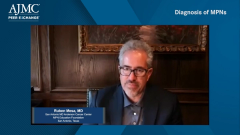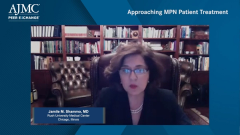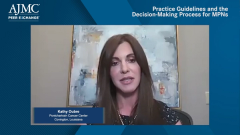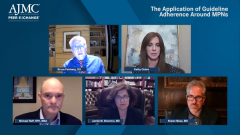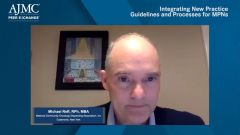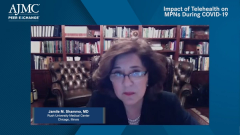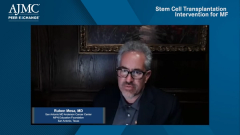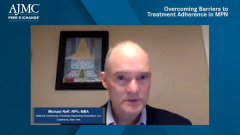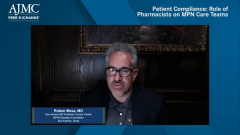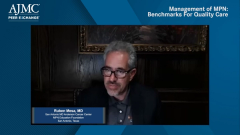
Management of MPN: Benchmarks For Quality Care
Ruben Mesa, MD, leads a discussion on key benchmarks and final thoughts about good-quality care programs for patients with MPNs, including parameters for judging efficacy and safety.
Episodes in this series

Bruce Feinberg, DO: Ruben, Kathy brought up JAK inhibitors as she talked about the progression of treatment for ET [essential thrombocythemia] and PV [polycythemia vera], but we spend a lot of time addressing that MF [myelofibrosis] population because it is a much more difficult population that we talk about. You mentioned transplant if they are eligible and if it is appropriate. Most of those patients are going to go on a JAK inhibitor early in the course of their disease. Some thoughts on that population?
Ruben Mesa, MD: As I was hearing Kathy describe their quality program in PV [at Pontchartrain Cancer Center], I was reflecting on how one would build a quality program in myelofibrosis. Up to this point in time, for a majority of the last decade, ruxolitinib as a JAK inhibitor has been our cornerstone of medical therapy for the majority of patients in the United States, and we now have fedratinib as an additional JAK inhibitor. There is a robust pipeline of agents that might end up being used in combination in the frontline setting and many new options in the second-line setting. In myelofibrosis, a quality program would revolve further around fairly accurate monitoring of those key benchmarks of what we use to assess efficacy: measurement of the spleen, quantification of symptoms through patient-reported outcome forms, and tracking of blood counts.
We can have a more structured way of deciding whether the pretreatment goals were met, and if not, we can decide if that at least helps trigger the consideration of change to a second-line therapy or addition of a therapy at 3 or 6 months. The fewer options we have, the fewer parameters we have to try to optimize. We have multiple potential agents that have become available and helpful, but as Kathy mentioned, all come with potential toxicities and financial toxicities. We want the quality program to help optimize how patients are managed.
I would envision that those pathways would include the key parameters we use to judge efficacy and safety for optimizing dosage, and we would then be able to track those over time and use that to help identify potential decision points, either in terms of dose modifications or changes and additions of therapies.
Michael Reff, RPh, MBA: I thought Ruben’s description was spot on. What thoroughly resonated with me was taking us through the whole quality circle, in a sense, of what a program looks like at a high level and getting into some of the details, specifically about the continuous evaluation and being able to utilize the tools that are in front of our clinicians at the practices, which are electronic medical records that can augment and support that continuous improvement loop. I thought his description of that for MF was spot on.
Jamile M. Shammo, MD: I could not agree more. The physician will find this particularly helpful from a practical perspective, particularly if you had built in the dose checkpoints. I would be looking at the creatinine level and the timing of the dosing in particular. Because physicians are busy, they do not have a lot of time to look at all those time points. Having a program like that to help them sort through it andtell them what is appropriate is a perfect idea.
Bruce Feinberg, DO: Thanks, everybody. That was a rich and informative discussion. Let me once again thank you all: Dr Jamile Shammo, Michael Reff, Dr Ruben Mesa, and Kathy Oubre. Thanks to all of you who are viewing, and I hope you found this AJMC® panel discussion to be useful and informative. Stay tuned for more. I am Dr Bruce Feinberg. Be well.
Transcript edited for clarity.
Newsletter
Stay ahead of policy, cost, and value—subscribe to AJMC for expert insights at the intersection of clinical care and health economics.

